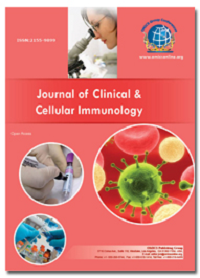SafeMinds has actively critiqued much of the research on the vaccine-autism link since 2000. Generation Rescue has provided two websites, fourteenstudies.org and putchildrenfirst.org, that provide critiques of the flaws of studies that are often used to refute the vaccine-autism link. Those websites include critiques written by SafeMinds, such as Analysis and Critique of the CDC’s Handling of the Thimerosal Exposure Assessment Based on VSD Information written as critique of the Verstraetten study. You will find other commentaries and critiques by SafeMinds below.
Urinary Excretion Study – SafeMinds Commentary (2/22/12)
Brief: Environment vs. Genetics
Why The Autism Epidemic Demands a New Approach
Background, Supporting Research and Analysis of Current Research Funding
Vaccines and Autism: What do Epidemiological Studies Really Tell Us?
This paper examines the epidemiological studies surrounding “autism and the MMR vaccine” and “autism and thimerosal”. It explains in detail the conflicts of interest, poor designs and unsupported conclusions in 16 different studies related to autism and vaccines. It includes the opinions of other authorities on these studies as well.
On-Time Vaccine Receipt in the First Year Does Not Adversely Affect Neuropsychological Outcomes (June 2010)
SafeMinds Safety First Comment to National Vaccine Program
SafeMinds Response to National Vaccine Plan of 2008 Draft (March 2009)
Latest Autism Gene Findings… Not Much (April 2009)
There’s a familiar rhythm to the most prominent autism gene hunt publications. Their authors hype their newly minted study aggressively in the media. The prestigious journals that publish them lend their imprimatur to press releases that say, “this study is a big deal.” The findings sound impressive in the press release (and the authors get plenty of time on camera and in leading newspapers to tell us how truly impressive they are). In the meantime–in papers that are so densely written that making sense of what they really say requires far more reflection than the media hype cycle permits–skillfully concealed evidence reveals the truly important new in the findings: the authors whisper quietly (if at all) that the new analysis negates the most important findings of some of the most prominent previous gene hunts, while crucial detail on their new findings is often relegated to “supplementary material” that’s not available on the publication date. Read more.
SafeMinds Sponsors and Attends 25th International Neurotoxicology Conference
NIH & AUTISM: A Case Study in Barriers to Progress in Environmental Medicine
October 2008 Authored by Sallie Bernard, Mark Blaxill and Theresa Wrangham
Read paper or poster.
SafeMinds and National Autism Association – NIEHS-Sponsored Symposium on Environmental Factors in Neurodevelopmental Disorders (August 2005)
In August 2005, a two-day symposium was held in Bethesda, Maryland on the role of environmental factors in the pathogenesis of autism spectrum disorders and related neurodevelopmental conditions. Dr. Kenneth Olden – then the director of NIEHS – conceived the idea for the conference, and the meeting was sponsored by NIEHS. Two autism research groups, the Coalition for SafeMinds and the National Autism Association, co-organized the meeting with a team of researchers they recruited to the effort.
MMR and Autism in Perspective: The Denmark Story (2004)
Authored by Carol Stott, Ph.D.; Mark Blaxill; Andrew J.Wakefield, M.B., FRCS for the Journal of American Physicians and Surgeons
Autism and related developmental disorders, once rare, are now becoming a common problem in Western countries. Although frequently catastrophic in their effects, the current crisis has come up against a “duck-and-cover” mentality from many a dusty corner of conventional medical wisdom. Read more.
Something is Rotten in Denmark (May 2004)
An Analysis of the Failures and Conflicts of Interest in Several Studies Used by IOM Vaccine Safety Committee Report. View Power Point
Generation Zero Full Analysis with Charts (2004)
Thomas Verstraeten’s First Analyses of the Link Between Vaccine Mercury Exposure and the Risk of Diagnosis of Selected Neuro-Developmental Disorders Based on Data from the Vaccine Safety Datalink: November-December 1999. Click here for full analysis with charts, click here for Generation Zero Synopsis.
Analysis and Critique of the CDC’s Handling of the Thimerosal Exposure Assessment Based on VSD Information (October 2003)
View Power Point
Analysis of the Danish Autism Registry Data Base in Response to the Hviid et al Paper on Thimerosal in JAMA (October 2003)
A large percentage of diagnosed autism cases are lost from the Danish registry each year. In the ten years preceding 2000, 815 cases were lost, more than the 710 remaining in the registry in 2000. The vast majority of those lost cases would represent older children in the 2000 registry. Since the relative risk of the Hviid study is based on finding fewer older thimerosal-exposed children than younger unexposed children, the validity of their conclusion exonerating thimerosal in autism is questionable. More likely, the finding is a result of missing records rather than true lower incidence rates among the exposed group. Read more.
Danish Thimerosal-Autism Study in Pediatrics: Misleading and Uninformative on Autism-Mercury Link (September 2003)
A report by Madsen et al. published by the American Academy of Pediatrics in their journal Pediatrics claims to provide evidence against a link between autism rates and the mercury in thimerosal, a preservative used in childhood vaccines. Unfortunately, the study analysis is full of flaws and inaccuracies, invalidating the conclusions regarding thimerosal. The study adds little of value to the scientific literature on autism and mercury. Read more.
SafeMinds Press Release: Vaccine Health Officials Manipulate Autism Records to Quell Rising Fears over Mercury in Vaccines: Safe Minds Cites Unscientific Trending Techniques and Conflicts of Interest, Call Study’s Conclusions Doubtful
Commentary on Croen et al. (2002) The Changing Prevalence of Autism in California (April 2003)
Authored by Blaxill, Baskin and Spitzer Journal of Autism and Developmental Disorders, Vol. 33, No. 2, April 2003
Lisa Croen and colleagues (Croen, Grether, Hoogstrate, & Selvin, 2002) suggest that the real incidence of autism has not increased. They propose instead that a pattern of “diagnostic substitution” has moved Californian patients who would previously have been diagnosed as mentally retarded (Croen, Grether, & Selvin, 2001) into the autism category. Their calculations purport to demonstrate that over 100% of the increase in autism from 1987–1994 is an artifact of changes in diagnostic practices. In your editorial commentary, Eric Fombonne praises the study, and claims “Croen et al. carefully analyzed the California dataset.” Read more.

Autism’s Co-Occurring Conditions: Time to Act
The evidence is piling up on the severe burden of health problems that accompany autism spectrum disorder (ASD). These problems are often unrecognized and not addressed. According to a new study from scientists with the U.S. Centers for Disease Control & Prevention (CDC), “the high prevalence and diversity of co-occurring conditions/symptoms in ASD suggest the need for a comprehensive system of care for these children.”

Cannabis for Autism: Biological Clue to Effectiveness
Many parents are reporting success using cannabis for their child with autism. A new study by researchers at Stanford University gives a clue to why cannabis might be effective for the person with autism spectrum disorder (ASD). The study, “Plasma anandamide concentrations are lower in children with autism spectrum disorder,” found reduced amounts of a neuromodulator, anandamide (N-arachidonoylethanolamine or AEA), in the blood of 60 children with ASD compared to 56 neurotypical control children. The children were ages 3-12 years. The ASD group had a confirmed autism diagnosis. The typical controls had no history of neurodevelopmental or mental health problems.

Acetaminophen as a cause of the autism pandemic? It makes absolutely no sense … at first.
My research looks at what causes harmful inflammation in people in Western societies. The triggers of inflammation are recent developments in human history, appearing after the agricultural revolution only 10,000 years ago. Most did not appear until just a few decades ago, as we entered the post-industrial age. 1 My favorite example is the loss of biodiversity from the human body. Humans have always been bathed inside and out with bacteria, viruses, fungi, worms, and other organisms, but in recent decades our bodies’ ecosystems have become much less diverse, to our detriment.

Duke University Study Finds Helminths are Beneficial to the Gut Biome Promoting More Good Bacteria and Less Bad
Acting on this discovery could have a profound affect on human health. The idea that from the ecosystem of the human body is leading to inflammation and disease is gaining widespread acceptance. This loss of diversity, known as “biome depletion”, is caused by a variety of factors in modern society and has an effect on every aspect of our body’s development and function, including our brain’s development and function. Most attention among scientists and the media alike has focused on the microbiome, the microorganisms or germs in our biome. However, a substantial body of experimental evidence points toward the presence or absence of larger organisms, helminths or worms, as having a generally more global effect on the body’s function, including alteration in the microbiome.

Study Finds Autism-Mercury Link Through Elevated Antibodies to Critical Brain Proteins
A study published in the current issue of the Journal of Clinical & Cellular Immunology found indicators of autoimmunity to critical brain proteins associated with mercury exposure in children with autism. The authors, Gehan Ahmed Mostafa and Laila Yousef AL-Ayadhi at the Department of Pediatrics, Faculty of Medicine, Ain Shams University, in Cairo, Egypt and the Autism Research and Treatment Center in the Department of Physiology, Faculty of Medicine, at King Saud University in Riyadh, Saudi Arabia, respectively, hypothesize that mercury might play a causative role in some cases of autism through increased levels of antibodies to myelin basic protein, or MBP.

Worms and Germs: Why This University Researcher Believes that Understanding the Human Biome Can Help Our Kids
William Parker, Ph.D., an immunologist and associate professor at Duke University School of Medicine, spends his time studying the effects of worms—yes, worms—on rats’ and humans’ immune systems. His worms aren’t the brown kind that live in your garden, but special worms called helminths that might help our kids with autism.


